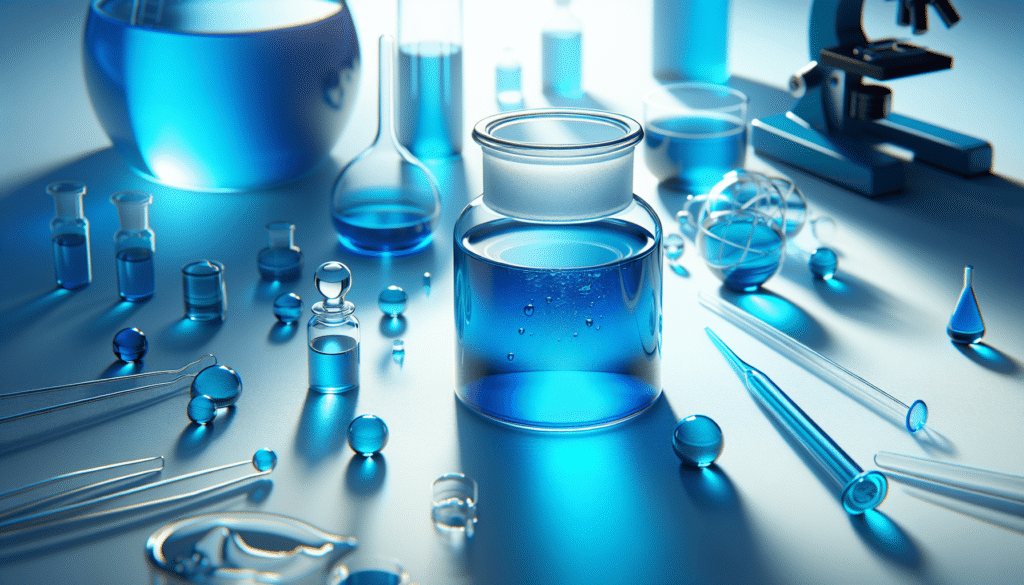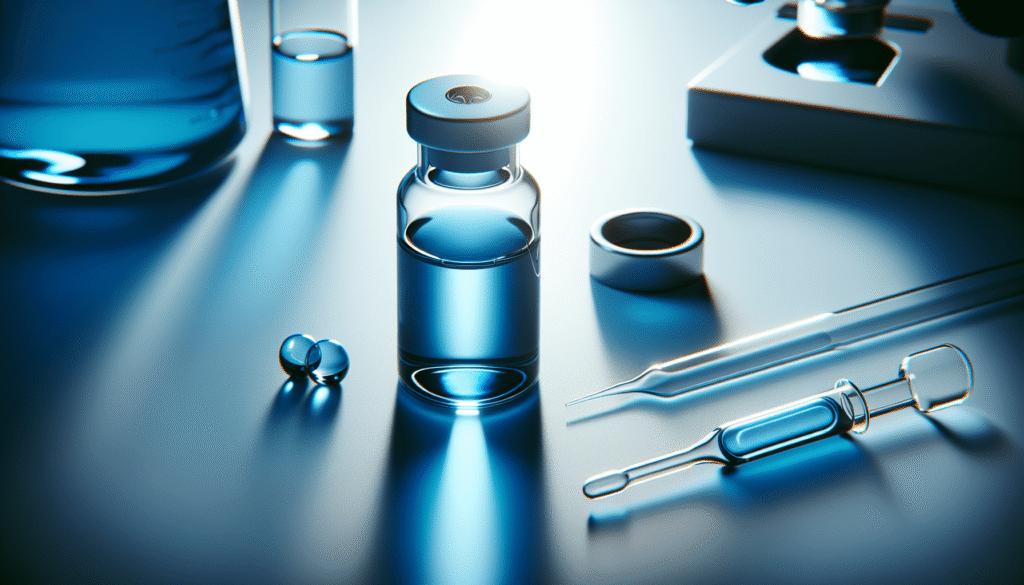
Have you ever wondered what Methylene Blue is and how it functions within the body? This compound, often overlooked, has a fascinating history and a wide array of applications in both medicine and biology. Understanding its properties and mechanisms can provide you with valuable insights into its significance in various fields.

Introduction to Methylene Blue
Methylene Blue is a synthetic dye that has been utilized for over a century in various fields including medicine, biology, and even chemistry. Originally developed in the late 19th century, it has endured the test of time due to its unique properties and versatility. The dye primarily appears as a deep blue powder that easily dissolves in water, forming a vivid blue solution.
You may be curious about its wide range of applications. Methylene Blue has found its place in the treatment of certain medical conditions, as well as in a myriad of laboratory protocols. It is known for its electrochemical properties and mechanisms that can have profound effects on biological systems.
Chemical Properties of Methylene Blue
Understanding the chemical structure of Methylene Blue is fundamental to appreciating how it interacts with biological systems. It is classified as a phenothiazine dye. The chemical formula of Methylene Blue is C16H18ClN3S, and it has a molecular weight of approximately 319.85 g/mol.
Structure
The compound’s structural formula is notable for its tricyclic structure, which contributes to its unique properties. The presence of nitrogen, sulfur, and chlorine atoms allows Methylene Blue to engage in various chemical reactions. These reactions form the basis of its functioning in biological systems.
The chemical structure of Methylene Blue can be summarized as follows:
| Component | Description |
|---|---|
| Core structure | Tricyclic phenothiazine |
| Functional groups | Amine, thiazine, and nitrogen |
| Solubility | Water-soluble |
Properties
Methylene Blue exhibits distinctive physical and chemical properties that make it a useful tool in various applications. It is stable in neutral solutions but can be reduced under acidic conditions, leading to the formation of the leuco form of Methylene Blue, which is colorless.
In its standard form, Methylene Blue is an excellent electron acceptor. This characteristic allows it to participate in redox reactions, facilitating biological processes such as aerobic respiration.
Medical Uses of Methylene Blue
Methylene Blue is not merely a laboratory dye; it has significant medical applications, some of which may surprise you. Its roles in diagnosing conditions and treating several health issues highlight its importance in contemporary medicine.
Diagnostic Uses
In the medical field, Methylene Blue has been employed as a contrast agent in various imaging techniques. One of its chief uses is during imaging studies involving the lymphatic system. Methylene Blue can help visualize certain anatomical structures, allowing healthcare professionals to identify issues like lymphedema.
Treatment of Methemoglobinemia
One of the most critical medical applications of Methylene Blue is in the treatment of methemoglobinemia, a condition where the blood cannot effectively carry oxygen. In this situation, Methylene Blue acts as an electron donor. It helps reduce methemoglobin back to hemoglobin, thereby restoring normal oxygen transport.
The effectiveness of Methylene Blue in this treatment is reflected in its mechanism of action:
| Mechanism | Explanation |
|---|---|
| Electron Transfer | Methylene Blue donates electrons to methemoglobin, converting it back to hemoglobin |
| Restoration of Functionality | It allows the red blood cells to resume their oxygen-carrying capacity |
Treatment of Urinary Tract Infections
Beyond its use in methemoglobinemia, Methylene Blue has also been historically utilized as an antiseptic to treat urinary tract infections (UTIs). Its antimicrobial properties can help alleviate symptoms, although it is now less commonly used for this purpose due to the availability of more effective antibiotics.
Methylene Blue in Biological Research
Following its medical applications, Methylene Blue remains a critical tool in biological research. Its roles range from serving as a staining agent to being involved in cellular and molecular biology studies.
Cellular Imaging
Methylene Blue is routinely used as a staining agent in microscopy. When applied to cells, it can help visualize structures by staining nuclei and oxidizing cellular components. This property is invaluable in histological examinations, allowing researchers to examine cell structure and morphology.
Role in Cell Respiration Studies
In the context of cell respiration, Methylene Blue is often employed in studies investigating mitochondrial function. By acting as an electron carrier, it can participate in electron transport chain experiments, providing insights into cellular respiration processes. Additionally, its redox properties allow researchers to monitor metabolic pathways effectively.
Antioxidant Activity
Emerging studies suggest Methylene Blue possesses antioxidant properties. These properties may protect cells from oxidative stress, a factor in many diseases, including neurodegenerative disorders. The implications of these findings are profound, as they could lead to new therapeutic approaches utilizing Methylene Blue in oxidative stress-related conditions.

Mechanism of Action
Understanding how Methylene Blue operates at a biochemical level reveals its multifaceted nature. The compound primarily functions through its ability to act as an electron carrier, facilitating various biochemical reactions.
Redox Chemistry
The redox chemistry of Methylene Blue is perhaps the most crucial aspect of its mechanism. In its oxidized form, it captures electrons, allowing it to act as an electron acceptor. When it donates electrons, it reduces various substances, making Methylene Blue a critical component for sustaining cellular functions.
Oxygen Transport
In treating methemoglobinemia, Methylene Blue’s redox properties specifically allow for the restoration of normal oxygen transport in blood. By helping convert methemoglobin back to hemoglobin, it directly influences oxygen delivery throughout the body. This restoration is not merely biochemical; it has real-world implications for patient health.
Interactions with Other Compounds
Methylene Blue can interact with various compounds, influencing its effectiveness. For instance, when used with certain drugs, like those that inhibit MAO (Monoamine Oxidase), Methylene Blue’s interactions can pose risks of serotonin syndrome. This highlights the necessity for careful medical oversight when using Methylene Blue therapeutically.
Safety and Side Effects
While Methylene Blue holds promise in various applications, it is essential to consider safety factors and potential side effects. Understanding these aspects enhances your knowledge about its usage in a clinical setting.
Side Effects
Generally, Methylene Blue is considered safe when used at appropriate doses. However, side effects can occur, including:
- Skin Discoloration: A common side effect is a transient blue discoloration of the skin and mucous membranes.
- Gastrointestinal Issues: Some patients may experience nausea and vomiting.
- Serotonin Syndrome: As mentioned, Methylene Blue can interact with certain medications, leading to this potentially life-threatening condition.
| Side Effect | Description |
|---|---|
| Skin Discoloration | Temporary blue tinge in skin and mucous membranes |
| Gastrointestinal Issues | Nausea and vomiting may occur in certain individuals |
| Serotonin Syndrome | A serious condition caused by drug interactions |
Contraindications
Certain individuals should avoid Methylene Blue, especially those who are sensitive to the compound or those taking drugs that influence serotonin levels. Always consult with a healthcare professional before using Methylene Blue, especially if you’re concurrently taking other medications.
Conclusion
So, what have we learned about Methylene Blue? This synthetic dye is far more than just color; it serves a multitude of essential roles in medicine and scientific research. Whether utilized as a diagnostic tool, an agent in treating methemoglobinemia, or a participant in research regarding cellular respiration, Methylene Blue’s unique properties make it a significant compound in various fields.
By comprehending its mechanisms, you gain insight into not only its current applications but also its potential in future medical and research settings. As research continues, Methylene Blue may reveal even more secrets that could benefit humanity, reaffirming the importance of understanding such compounds in science and healthcare.
Now that you have a comprehensive understanding of what Methylene Blue is and how it works, consider how this knowledge applies to various aspects of health, biology, and research, and continue to stay informed about its evolving role in these critical areas.